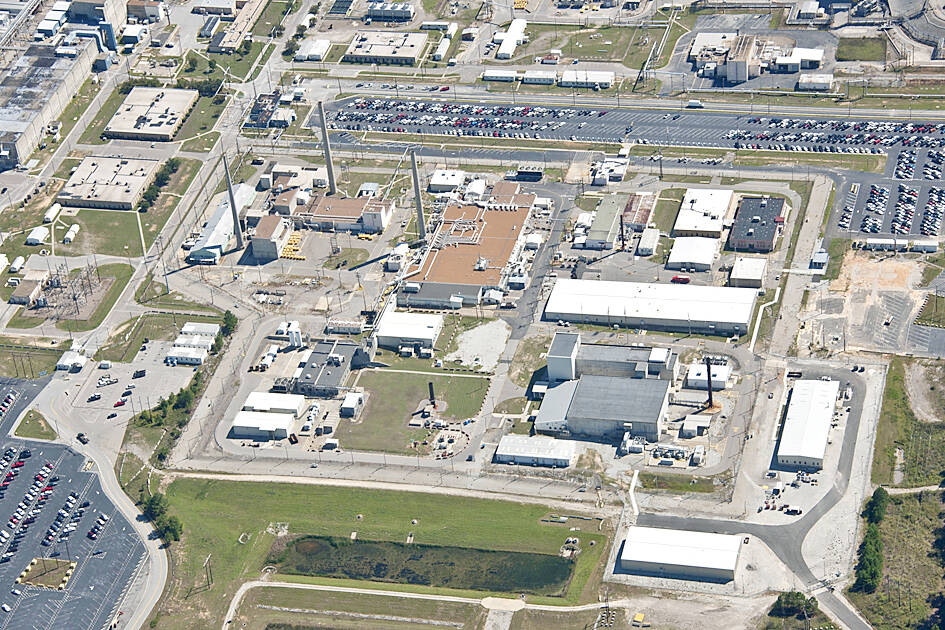US President Donald Trump’s administration has halted the firings of hundreds of federal employees who were tasked with working on the nation’s nuclear weapons programs, in an about-face that has left workers confused and experts cautioning that the Department of Government Efficiency’s (DOGE’s) blind cost cutting would put communities at risk.
Three US officials who spoke to The Associated Press said up to 350 employees at the National Nuclear Security Administration (NNSA) were abruptly laid off late on Thursday, with some losing access to e-mail before they’d learned they were fired, only to try to enter their offices on Friday morning to find they were locked out.
The officials spoke on the condition of anonymity for fear of retaliation.

Photo: Reuters / National Nuclear Security Administration
One of the hardest hit offices was the Pantex Plant near Amarillo, Texas, which saw about 30 percent of the cuts. Those employees work on reassembling warheads, one of the most sensitive jobs across the nuclear weapons enterprise, with the highest levels of clearance.
The hundreds let go at NNSA were part of a DOGE purge across the Department of Energy that targeted about 2,000 employees.
“The DOGE people are coming in with absolutely no knowledge of what these departments are responsible for,” Arms Control Association executive director Daryl Kimball said. “They don’t seem to realize that it’s actually the department of nuclear weapons more than it is the Department of Energy.”
Late on Friday night, NNSA Acting Administrator Teresa Robbins issued a memo rescinding the firings for all but 28 of those hundreds of fired staff members.
“This letter serves as formal notification that the termination decision issued to you on Feb. 13, 2025 has been rescinded, effective immediately,” said the memo, which was obtained by the AP.
The accounts from the three officials contradict an official statement from the energy department, which said fewer than 50 NNSA staffers were let go, calling them “probationary employees” who “held primarily administrative and clerical roles.”
But that was not the case. The firings prompted one NNSA senior staffer to post a warning and call to action.
“This is a pivotal moment. We must decide whether we are truly committed to leading on the world stage or if we are content with undermining the very systems that secure our nation’s future,” NNSA deputy division director Rob Plonski posted on LinkedIn. “Cutting the federal workforce responsible for these functions may be seen as reckless at best and adversarily opportunistic at worst.”
While some of the energy department employees who were fired dealt with energy efficiency and the effects of climate change, issues not seen as priorities by the Trump administration, many others dealt with nuclear issues, even if they did not directly work on weapons programs.
This included managing massive radioactive waste sites and ensuring the material there does not further contaminate nearby communities.
That includes the Savannah River National Laboratory in Jackson, South Carolina; the Hanford Nuclear Site in Washington state, where workers secure 177 high-level waste tanks from the site’s previous work producing plutonium for the atomic bomb; and the Oak Ridge Reservation in Tennessee, a Superfund contamination site where much of the early work on the Manhattan Project was done, among others.
The NNSA staff who had been reinstated could not all be reached after they were fired, and some were reconsidering whether to return to work, given the uncertainty created by DOGE.
Many federal employees who had worked on the nation’s nuclear programs had spent their entire careers there, and there was a wave of retirements in recent years that cost the agency years of institutional knowledge.
However, it is now in the midst of a major US$750 billion nuclear weapons modernization effort — including new land-based intercontinental ballistic missiles, new stealth bombers and new submarine-launched warheads. In response, the labs have aggressively hired over the past few years: In 2023, 60 percent of the workforce had been there five years or less.
Edwin Lyman, director of nuclear power safety at the Union of Concerned Scientists, said the firings could disrupt the day-to-day workings of the agency and create a sense of instability over the nuclear program at home and abroad.
“I think the signal to US adversaries is pretty clear: throw a monkey wrench in the whole national security apparatus and cause disarray,” he said. “That can only benefit the adversaries of this country.”

Incumbent Ecuadoran President Daniel Noboa on Sunday claimed a runaway victory in the nation’s presidential election, after voters endorsed the young leader’s “iron fist” approach to rampant cartel violence. With more than 90 percent of the votes counted, the National Election Council said Noboa had an unassailable 12-point lead over his leftist rival Luisa Gonzalez. Official results showed Noboa with 56 percent of the vote, against Gonzalez’s 44 percent — a far bigger winning margin than expected after a virtual tie in the first round. Speaking to jubilant supporters in his hometown of Olon, the 37-year-old president claimed a “historic victory.” “A huge hug

Two Belgian teenagers on Tuesday were charged with wildlife piracy after they were found with thousands of ants packed in test tubes in what Kenyan authorities said was part of a trend in trafficking smaller and lesser-known species. Lornoy David and Seppe Lodewijckx, two 19-year-olds who were arrested on April 5 with 5,000 ants at a guest house, appeared distraught during their appearance before a magistrate in Nairobi and were comforted in the courtroom by relatives. They told the magistrate that they were collecting the ants for fun and did not know that it was illegal. In a separate criminal case, Kenyan Dennis

A judge in Bangladesh issued an arrest warrant for the British member of parliament and former British economic secretary to the treasury Tulip Siddiq, who is a niece of former Bangladeshi prime minister Sheikh Hasina, who was ousted in August last year in a mass uprising that ended her 15-year rule. The Bangladeshi Anti-Corruption Commission has been investigating allegations against Siddiq that she and her family members, including Hasina, illegally received land in a state-owned township project near Dhaka, the capital. Senior Special Judge of Dhaka Metropolitan Zakir Hossain passed the order on Sunday, after considering charges in three separate cases filed

APPORTIONING BLAME: The US president said that there were ‘millions of people dead because of three people’ — Vladimir Putin, Joe Biden and Volodymyr Zelenskiy US President Donald Trump on Monday resumed his attempts to blame Ukrainian President Volodymyr Zelenskiy for Russia’s invasion, falsely accusing him of responsibility for “millions” of deaths. Trump — who had a blazing public row in the Oval Office with Zelenskiy six weeks ago — said the Ukranian shared the blame with Russian President Vladimir Putin, who ordered the February 2022 invasion, and then-US president Joe Biden. Trump told reporters that there were “millions of people dead because of three people.” “Let’s say Putin No. 1, but let’s say Biden, who had no idea what the hell he was doing, No. 2, and